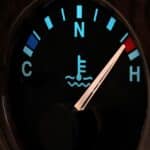Winter Driving Safety Checks for Optimal Performance
Rain, snow and sleet are a few of the weather conditions that can make winter driving dangerous. An
accident happens in milliseconds. Keep yourself and your family safe this winter season by taking steps to make sure that your car is ready for the road. There are a number of safety checks to perform to ensure that your vehicle is prepared for any winter weather conditions that you may encounter before getting on the road.
Perform Routine Maintenance
Like scheduling a child for its regular checkup, your vehicle needs its routinely scheduled maintenance. The following items are strongly suggested.
- Have a trusted mechanic check your vehicle for worn hoses, leaks, necessary repairs and replacements.
- Regular oil changes and the addition of fluids, such as windshield wiper fluid and engine oil are simple things to do that will help you get to your destination without hampered vision or vehicle performance issues. Fill your windshield washer reservoir before the first snowfall and use a “no-freeze” fluid.
- In addition, the tire pressure for all of your tires should be at the level recommended in your vehicle’s owner manual. Drops in temperature can reduce the pressure in one or more of your tires. This can put additional stress on your vehicle if you need to suddenly stop and break in less than ideal road conditions.
Review the Overall Condition of Car Parts
Each element of your vehicle has a lifespan and it makes sense to review those parts that seriously
undermine your vehicle’s performance and your driving experience.
 Your windshield wipers and defroster improve visibility while driving. Look at your wipers and make sure that they work properly and replace any worn blades. Individuals that live in areas subject to heavy snow conditions might want to install a heavy-duty set of wipers. Also make sure that window defrosters for the front and rear windows work as expected.
Your windshield wipers and defroster improve visibility while driving. Look at your wipers and make sure that they work properly and replace any worn blades. Individuals that live in areas subject to heavy snow conditions might want to install a heavy-duty set of wipers. Also make sure that window defrosters for the front and rear windows work as expected.- Temperature also impacts your car’s battery power. Your battery should be checked for sufficient voltage, with a review of the belts and the charging system. You can stop in at your mechanic for a thorough inspection. Replace batteries as necessary and make simple repairs such as tightening battery cable connections yourself.
- Have enough coolant in your vehicle that is designed to weather winter temperatures. Coolant expands when it freezes and can damage your engine block. Follow the specific recommendations in the owner’s manual. If your system has not been flushed in years, a replacement of coolant may be in order as the rust inhibitors within the fluid break down over time.
- Look over your tires. They need to be inspected once a month and always prior to a long trip. Check your tire pressure using the tire pressure gauge that you keep in your vehicle as part of your emergency kit. If the read is less than 1/16thof an inch or the tire shows uneven wear, it is time to replace your tires. Degradation of the integrity of your tires may not be visible. Find the age of your tires on their sidewall. The tire identification begins with “DOT”. The last digits give the week and year of manufacture. Check your manual for recommendations for replacement but know that a number of manufacturers recommend replacement every six years.
Have a happy and safe journey with the additional peace of mind that comes from the knowledge that your vehicle is at peak performance levels for winter driving conditions.














